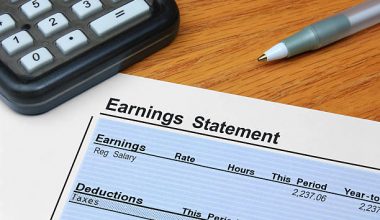If you’re one of the few Americans who have a pension, then you’re in luck. This is because having a pension affects most of the decisions you make in life, including the spouse you marry.
Included in these pensions is the NFL pension. Like many other professions, the NFL has a pension plan for its players.
It is known as the Bert Bell/Pete Rozelle NFL Player Retirement Plan. All four major league sports in the United States have pension plans for their players.
And, for the most part, players gain complete ownership of the plan once they have been on the active roster or injured reserve for three years. The benefit amount is then determined by the total number of recognized seasons of play. Meanwhile, pension benefits for NFL players averaged $43,000 annually in 2023, with no updates yet for 2024.
But let’s learn more about the NFL pension as you read this article, starting with the basics.
Key Points
- NFL players become eligible for a pension after playing for 3 credited seasons. A credited season requires being on an active roster or injured reserve for at least 3 games.
- As of 2023, the average NFL pension benefit was $43,000 per year. Players can start receiving full benefits at age 55.
- The pension amount is based on the number of credited seasons played. Players who retired after 1998 receive $5,640 per month for each year of service.
- In addition to the pension, NFL players have access to a 401(k) plan with generous employer matching (up to 200%) and a Player Annuity Program.
- The NFL also offers various health benefits to retired players, including joint replacement programs, Medicare supplements, and neurological care programs.
- Players receive a lump sum severance payment after retirement, with the amount based on their years of service.
- The NFL pension plan is considered less generous compared to some other professional sports leagues, like the NBA, but it still provides significant benefits to retired players.
Overview
Are you aware that when NFL players retire, they receive a pension? The benefit is a lifesaver, especially for athletes who don’t land lucrative endorsement deals. Thanks to the NFL’s Bert Bell/Pete Rozelle NFL Player Retirement Plan, players will continue to receive financial support even after their playing days end. Players gain complete ownership of the plan once they have been on the active roster or injured reserve for three years. The benefit amount is then determined by the total number of recognized seasons of play. Pension benefits for NFL players averaged $43,000 per year in 2023.
A skeptic could wonder why NFL players require pensions, given their enormous salaries. The average player makes $2.8 million a year, but that’s before you consider the short average career length of 3.3 years and the serious health risks associated with the job. The future security of these athletes, particularly those whose careers are abruptly ended, depends on a defined benefit pension plan.
There has been tremendous improvement in the funding status of the NFL pension plan. It had 89% funding in 2018 compared to 55.9% in April 2014. The fact that players can count on a steady stream of retirement income, along with survivor and disability benefits, is proof of the plan’s longevity and dependability. This is significant for NFL players because research suggests that veterans of the league may have a higher risk of premature death or brain diseases.
Retired players from other professional sports leagues, not just the NFL, also have access to defined benefit pension plans. Formed in 1947, the MLB pension plan is currently 87% funded. Considering its start in 2012, the NHL’s pension plan is astonishingly well-funded at 130%. The National Basketball Association pension began in 1965, but it is only 38% funded.
What is NFL Pension?
NFL pension is a pension plan given by the National Football League (NFL). However, the pension plans, like any other corporation in the U.S., are given according to the duration the employee has worked for.
NFL players have been covered by the pension plan since 1962. The current plan considers 55 to be the standard retirement age. Since the career of an NFL player can be very short and is extremely hard on the body, the pension fund is crucial for many players’ futures.
Professional athletes earn high incomes but often have relatively short careers lasting just a few years in many cases.
After retirement, most professional athletes have a league-sponsored pension plan to which they can look forward. Surprisingly, pension plans vary greatly among different sports, with some leagues providing players with lots of perks while others offer players the bare minimum.
Many professional athletes live the life that most people can only dream about. They enjoy large paychecks, big endorsement deals, and national publicity.
Throughout their careers, they have been loved and adored by their fans. But what happens when their professional sports careers are over?
How Does NFL Retirement Work?
NFL players leave a sport that has been the focus of their entire lives when they retire. They need to find a new direction and purpose now that football is no longer an option.
So what do some professionals who have retired do in this new stage of their lives?
Some begin careers in broadcasting. A few start enterprises. In either case, NFL players who prepare retirement plans years in advance frequently prosper, and while making individual retirement plans, you’ll probably have a lot of questions for a wealth manager.
If you’re wondering when you’ll leave the NFL, your age is.
Here is a succinct response:
NFL players are not given the privilege of picking their retirement date. You’ll hang up the cleats due to old age, injury, or a less expensive version of you.
NFL players are not required to stop playing at a specific age.
More information on that is provided in the section after this.
READ MORE: PENSION AND INVESTMENT: Best 2024 Guide
The NFL Pension Plan
NBA players have one of the most generous pension plans out of all professional sports. They are vested in their pension plans after playing at least three seasons in the league.
The average benefit in 2016 for a player who retires at the age of 50 is $38,000 per year – not a bad retirement for a three-year career. A 10-year veteran can gross $102,000.
But that is not all. NBA players are also eligible to participate in a league-sponsored 401(K). Do you think your 401(k) plan is good with a 50% matching policy? The NBA matches a player’s contributions up to 140%.
READ MORE: 401k: Easy Guide for Beginners and Pros(+Best 15 Plans in 2024)
What Is the NFL Retirement Age?
NFL players typically leave the sport at an early age—often in their 20s. NFL players often only participate in a few seasons. In their 30s, only the best may retire.
Some athletes get more and more cautious of their bodies as they get older. This may cause players to decide to quit the game before they lose. They begin to consider their actions off the field.
Others find it too challenging to stop playing the game they once fell in love with.
It is evident that there is no predetermined retirement age when all of these criteria are taken into account. Everything is dependent on the person.
NFL Retirement Planning Checklist
How long must you play in the NFL before receiving a pension?
Before becoming eligible for a pension, NFL players must compete for three seasons. He will thereafter be regarded as vested. Consequently, he qualifies for the benefits agreed upon in the CBA.
But what qualifies as a season? For at least three games, the NFL player must be listed on a team’s roster (regular season or postseason).
The player receives credits for each season he participates in. His pension is increased in proportion to his credit balance. Therefore, the money NFL players earn when they retire will differ.
How Much Do Retired NFL Players Make?
A retired NFL player’s income is determined by the number of seasons he played. Each season counts as a dollar credit toward the maximum pension he is eligible to earn.
Additionally, NFL players cannot get their full pension benefits until they are 55 years old. A player can earn a smaller sum of money along with early retirement penalties if he wants the money sooner. The benefit significantly rises for a player who can hold off on taking their pension till they are 65.
NFL players who have retired typically receive $43,000 a year in pension payments.
The majority of athletes choose to make 401(k) contributions at some point in their careers. Based on how much the NFL player contributed from his salary, the entire amount of the 401(k) plan is determined. As investment accounts, both this and the NFL CAP plan should be synchronized with your other investment accounts.
Another source of income is available through the NFL Annuity Program. The amount contributed throughout each credited season determines the annuity’s income level. It also depends on the player’s choice of annuity payment frequency and the age at which he made that decision. A retired athlete can start using this source of income at age 35.
The NBA 3-Year Pension Plan Qualification
The NFL could stand for “Not For Long,” with the average career lasting only three years. But that’s just enough time to qualify for the league’s pension plan.
The league’s plan is based on years of service in the league. A player with a minimum of three years of play reportedly receives an annual pension check of $21,360 at retirement. On average, retired players receive an annual pension check of about $43,000 in 2014.
Players who retired in the 1980s and 1990s reportedly receive anywhere from $3,000 to $5,640 per month for every season played in the NFL.
Newly retired players since 1998 receive $5,640 each month for every year of service. Players with 3 years of service receive an additional retirement bonus in the form of an annuity.
Players are eligible to receive their full benefits at the age of 55.5 While the pension plan is much worse than other sports, the NFL does offer a generous 401(k) plan. The league matches every player’s contribution by as much as 200%.
Players are eligible to receive their full benefits at the age of 55.5 While the pension plan is much worse than other sports, the NFL does offer a generous 401(k) plan. The league matches every player’s contribution by as much as 200%.
More so, your future financial success rests heavily on the decisions you make now — spending, saving, and investing your NFL earnings.
The average NFL career is 3.5 years long, with total earnings of $6.7 million. It is important to make the most of it!
READ MORE: Personal Finance: Basics, Importance, Types, Management ( + Free Softwares)
OJ Simpson NFL Pension
OJ Simpson played in the NFL from 1969 to 1979. NFL players who played before 1982 get a monthly pension credit of $250 for every season played. Since Simpson played 11 seasons, that adds up to $2,750 a month.
As part of a settlement in 2011, former players were given an extra monthly payment of $124 per season played before 1975, and $108 per season played in subsequent years.
Simpson played six seasons before 1975 (a monthly total of $744) and five seasons after ($540). That’s an additional $1,284.
That adds up to $4,034 a month.
That’s what Simpson would have made if he elected to start taking out his NFL pension at the age of 55. Getting paid that for 108 months in jail would mean O.J. made $435,672.
But if he waited until 65 (he turned 70 in July), he would have collected 2.619 times that, according to the formula. That would make his pension approximately $10,565 a month, and based on 60 months in jail after his 65th birthday, that’s $633,900.
Though Simpson’s pension looks great compared to other NFL retirees, he’s in some serious debt. Despite his acquittal during his infamous 1995 murder trial, a civil court ordered him in 1997 to pay a sizable fee to the families of his late ex-wife, Nicole Brown Simpson, and Ronald L. Goldman, in compensatory and punitive damages.
With accrued interest, he owes them $52 million. But fortunately for Simpson, according to the law, he’s not legally obliged to use his pension to pay that off.
READ MORE: Secondary Mortgage Market: Step By Step Guide On How It Works
How Much is NFL Pension?
According to the Mount Laurel-based NFL Alumni group, the NFL’s more than 10,000 retired players or alumni will all receive dramatically increased benefits as part of the new CBA between the owners and players.
After a week of voting, the CBA proposal was approved by the current players by a very close vote of 1,019 to 959, the NFLPA announced Sunday. A simple majority is needed to approve the proposal.
The collective bargaining agreement, negotiated by the NFL Players Association and the owners’ management council, governs all aspects of NFL operations and runs for 10 years.
According to the NFL Alumni, average pensions for players will go from $30,000 per year to $43,000 per year, and more than 10,000 former players will realize that benefit.
The change from four years of credited seasons to three to become vested for a pension provides a $19,800 annual pension for life for former players with three years of NFL service but not four.
Based on expected annual NFL revenue growth, that figure is expected to increase to $22,000 in 2025, which affects an estimated 3,000 retired players. However, as I mentioned in the introduction, the average for 2023 was $43,000.
More so, retired players 65 or older will see a 25 percent increase in their Medicare supplement benefit.
Also, according to the release from the NFL Player Alumni’s website, the new CBA calls for “all retired players to receive free or low-cost screenings, preventive care, mental health services and orthopedic care at a new national network of top hospitals created by the owners and the union.”
Eligiblity for NFL Pension
To qualify for an NFL pension, a player must:
- To be considered vested, you must have played in the NFL for at least three seasons or have been on a team’s roster for at least three games.
- Each season played counts as a credit towards the pension amount received.
- It’s worth noting that there is no set retirement age for NFL players. Retirement is frequently determined by factors such as age, injury, or being replaced by a less expensive player.
401(k) and Annuity Plans
In addition to the NFL pension, retired players can take advantage of the league’s 401(k) plan and NFL Annuity Program. These programs offer additional sources of income during retirement.
- The 401(k) plan is a retirement savings account whose total amount is determined by the player’s salary contributions over the course of their career.
- The NFL Annuity Program pays out based on contributions made during each credited season. The amount received is determined by the player’s age at the time payments begin and the frequency with which payments are made. Players can start earning money as soon as they turn 35 years old.
- To ensure the player’s financial security in retirement, both of these plans should be coordinated with their overall investment strategy.
Retirement Planning Advice for NFL Players
To ensure a comfortable and secure retirement, NFL players should consider the following tips:
- Recognize that your NFL career will come to an end, and start planning for retirement as soon as possible.
- Consider yourself the CEO of your own business, accountable for your financial decisions and surrounded by a team of experts.
- Work with a specialized financial team that understands athletes’ specific needs and challenges.
- Think like an NFL owner, prioritizing long-term financial security over short-term gains.
- Continue to educate yourself about your financial options and stay current on changes in the industry and economy.
Common Mistakes and How to Avoid them
Retired NFL players frequently face unique financial challenges, and it is critical to be aware of common errors in order to avoid potential pitfalls. Some of these mistakes are:
- Failing to plan for the long run and focusing solely on short-term gains.
- Not diversifying investments and focusing all financial resources in one area.
- Trusting the wrong people, or failing to hold financial advisors accountable.
- Overspending and living beyond one’s means during and after their NFL career.
Avoiding these mistakes and working with a reputable financial advisor can help you achieve a successful and financially secure retirement.
Working with a Financial Advisor
Partnering with a knowledgeable and experienced financial advisor is critical for NFL players planning their retirement. These experts can guide you through the complexities of the NFL pension system, investment strategies, and long-term financial planning.
A financial advisor can also help retired NFL players make informed decisions about disability insurance, tax planning, and estate planning, allowing them to protect and grow their wealth.
When choosing a financial advisor, make sure they specialize in working with athletes and understand the unique challenges and opportunities they face.
To summarize, understanding the intricacies of the NFL pension and retirement planning is critical for NFL players seeking to secure a comfortable and prosperous future after their playing career is over. By following the advice and strategies outlined in this guide, players can take control of their financial future and make a smooth transition to life after football.
How Much Is A 10-Year NFL Pension?
In order to get the $43,560 per year, tax-free, after the age of 55, the player in question would have to have played in the NFL for ten years after 1993.
At What Age Do NFL Players Get Their Pension?
Pension benefits can generally be started at age 55. However, if you had a Credited Season prior to 1993, you may be able to start receiving them at age 45. Prior to 2012, former players with a minimum of three creditable seasons will receive $550 for each season.
Do Retired NFL Players Still Get Paid?
A lump sum post-retirement check is given as severance pay. After a full year without engaging in any NFL contract action, you will be paid on the quarter’s end date. The amount you will receive is determined by the years you participated and the number of credited seasons you have.
How Much Does Tom Brady Make in Retirement?
Brady’s annual salary as Fox’s top game analyst after retirement may reach $25 million. At ESPN and CBS, Brady will easily defeat Tony Romo and Troy Aikman.
READ MORE: EQUITY FINANCING: Types, Sources, Advantages & Disadvantages
NFL Pension Plan Calculator
The amount of pension money an NFL player receives depends on the time they retire. For example, according to Investopedia, if a player retired in the 1980s or 90s they could receive between $3000 to $5640 per month. NFL players who retire after 1998 receive $5,640 each month.
The amount is also based on the number of credited seasons played. Under the 2020 CBA agreement, player retirement funding was increased.
Meanwhile, here is a calculator to help you deal with the rigorus process of calculating your NFL pension.
NFL Pension Benefits Calculator
On the other hand, you can use the template below to do the calculations manually:
NFL Pension Benefits Calculator
NFL Pension Plan Breakdown
NFL pension value increases periodically and is the same for all players regardless of salary.
Currently, a player with a minimum of three years of play would receive an annual pension check of $21,360 at retirement. On average, retired players receive about $43,000 annually from their pension.
Players who take advantage of the 401(k) plan would also be able to make withdrawals from that account when eligible. The amount of this benefit would depend on how much he chose to contribute to the plan while he was still earning money.
Similarly, players with an annuity could be receiving payments from that as well. Again, the amount would depend on the total amount of the annuity; it would also depend on how the player chose to receive payments (including the age to start and the frequency of payments).
READ MORE: 401k: Easy Guide for Beginners and Pros(+Best 15 Plans in 2024)
Benefits of the NFL Pension
Players can qualify for two other benefits in addition to the pension plan. One is a 401(k)-type plan (the Second Career Savings Plan) that includes two-for-one employer matching, and it is available to players once they play for two seasons.
The other benefit is a Player Annuity Program, which is available after they play for four seasons.
Former NFL players are also eligible for several types of healthcare benefits.
The National Football League Players Association (NFLPA) describes the following benefits available to former players.
- A Joint Replacement Program provides assistance to former players who require medically necessary joint replacement
- A Medicare supplement program helps to pay for Medicare supplement insurance for those 65 or older and covered by Medicare
- Life insurance for those under 55 years of age
- A neurological care program with no out-of-pocket expense to retired players
- A spine treatment program with no out-of-pocket expense to retired players
- A discount prescription drug card
- Priority access to assisted living facilities
Pension for NFL Hall of Fame
There is no special pension for former NFL players who are in the Hall of Fame, except for what other former NFL players receive. The number of seasons a Hall of Famer plays affects his pension. Similarly to a non-Hall of Famer.
What Additional NFL Retirement Benefits Exist?
NFL players have access to two more advantages in addition to the pension plan.
The Second Career Savings Plan has only one perk. That is a 401(k)-style plan where the employer doubles the amount contributed by the employee. The NFL player has two more seasons to use this plan after that.
A player annuity program is also available. After four seasons of play, former athletes are eligible for this incentive.
However, there are additional NFL retirement benefits that former players can take advantage of. Additionally, there are health advantages.
After the initial five years granted after retirement, insurance under the NFL Plan can cost up to $35,000 per year in premiums alone. This is a significant expense that needs to be budgeted for before a retired player is required to begin making premium payments.
Players receive $25,000 per year for medical care and an additional $25,000 per year for mental health services through the NFL Dedicated Hospital Network Program.
This is a fantastic earned benefit that should be used whenever possible, not as a substitute for insurance.
The Former Player Life Improvement Plan, according to the National Football League Alumni, gives former NFL players access to the following benefits:
- There is a joint replacement program for former athletes who require joint surgery.
- For ex-players under the age of 55, life insurance
- A card that offers prescription drug discounts
- A Medicare supplement program that assists former athletes who are 65 or older and are enrolled in Medicare with the cost of their Medicare supplement insurance
- A program for neurological care that pays for the costs associated with neurological treatment for the body is
- access to facilities for assisted living.
- A spine therapy program with full financial support
READ MORE: Cash Flow Statement Indirect Method: Overview, Examples, Calculations
Furthermore, a severance payment is another perk that certain retired NFL players may be eligible to receive. For access to their severance payment, former NFL players must have at least two credited seasons, according to NFLPA.
The lump sum severance payment is given in the form of a cheque. After their NFL contract expires, players get this payment a full year later. The sum is determined by the player’s seasons of service and the years in which those seasons occurred. For instance, players received $22,600 every credited season from 2017 to 2019 as part of their severance settlement.
Do NFL Coaches Receive A Pension?
The league’s uniformed pension for coaches, which had previously been required, was made voluntary by a club decision in March 2009.
What NFL Quarterback is The Richest?
Four quarterbacks, including Aaron Rodgers, Russell Wilson, Kyler Murray, and Deshaun Watson, have subsequently surpassed Patrick Mahomes of the Chiefs, who had the highest average compensation at the start of the 2024 offseason at $45 million annually.
Do NFL Waterboys Get Benefits?
Waterboys also receive benefits outside of their regular pay. In particular, players may give them a variety of gifts and free mementos, such as toys or jerseys. Additionally, they may easily access the squad that the majority of fans fantasize about.
How Much Does an NFL Waterboy?
In a TikTok video, former NFL player Jake Thieneman asserted that the average salary for an NFL water boy is $53,000, adding that the exact amount is dependent on the team’s standing and the applicant’s level of expertise.
Bottom Line
I hope this article explains everything there is about the NFL pension as well as its benefits. If you have any questions, let me know in the comments section.
All the best!
NFL Pension FAQs
What is NFL Pension?
NFL pension is a plan given by the National Football League to its players.
How long is the NFL pension?
The duration of the NFL pension is dependent on the length of time the employee worked for.
Recommendation
- Cash Balance Plan for Retirement: Contributions Limits 2023 (Updated!)
- Diversification: Definition, Types, Strategies
- Diversifying Portfolios: Meaning, Pros, Cons & How-to Guide
- What happens to 401k when you quit: Best 2023 Practices (Updated)
- Declaration of Trust: Best US Practices & Definitive Guide







1 comment
I’m glad to see that this blog post has been updated. I think that it is important for people to be aware of the NFL pension and the potential consequences of not taking it.